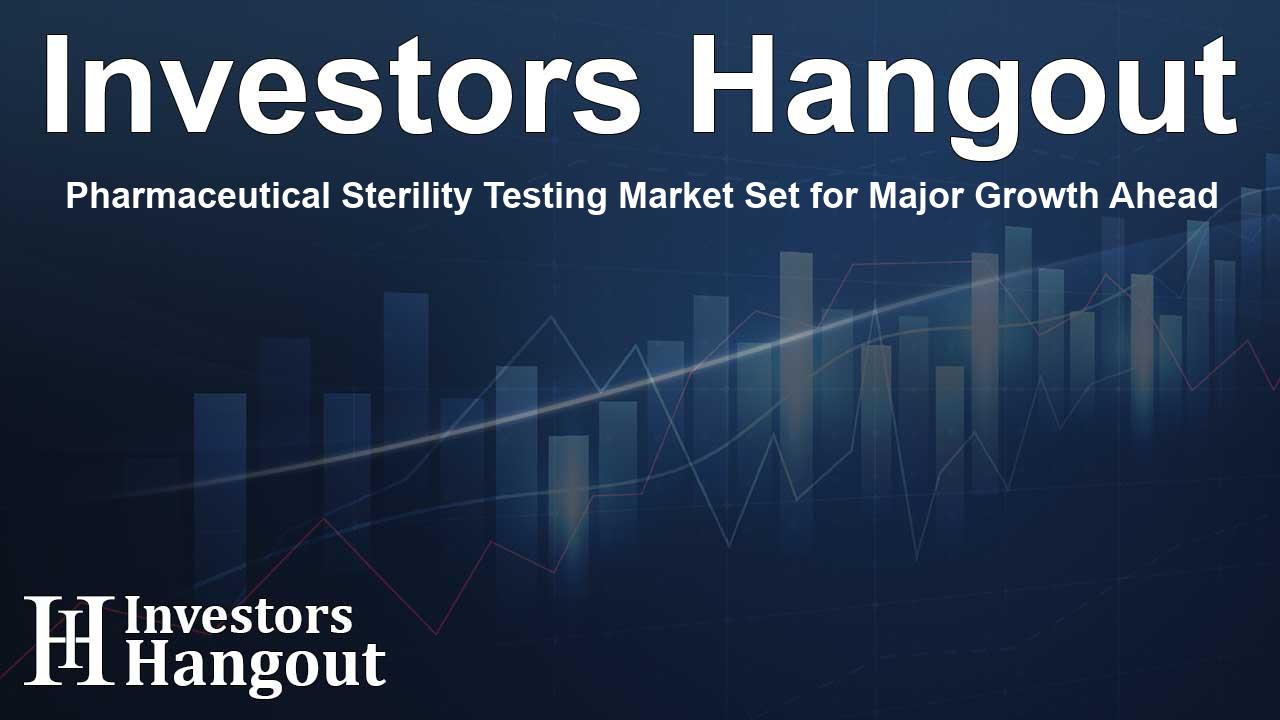Pharmaceutical Sterility Testing Market Set for Major Growth Ahead

Pharmaceutical Sterility Testing Market Growth and Future Prospects
The pharmaceutical sterility testing market is poised for substantial growth, as recent reports suggest it will leap from a valuation of USD 1.42 billion in 2023 to USD 3.79 billion by 2032. This projected increase, representing a compound annual growth rate (CAGR) of 11.58% from 2024 through 2032, highlights the escalating importance of sterility in the production of healthcare products.
Driving Forces Behind Market Expansion
Various factors contribute to the expansion of the pharmaceutical sterility testing market. The primary driver is the rising demand for safe and effective pharmaceutical products. Strict regulations enforced by health authorities put pressure on companies to ensure product sterility while prioritizing patient safety. Additionally, the growing incidence of infectious diseases and the rapid growth of the pharmaceutical manufacturing sector amplify the need for reliable sterility testing services.
Technological Innovations Enhancing Testing Efficiency
Significant advancements in testing technologies—particularly automated methods and rapid sterility testing—are expected to propel market growth. In the realm of biopharmaceuticals, evolving areas such as biologics and gene therapies present emerging opportunities for sterility testing. As personalized medicine continues to gain momentum, the need for comprehensive sterility testing to validate these advanced treatments becomes essential.
Current Trends in Outsourcing and In-House Testing
In 2023, outsourcing remained the predominant approach, commanding approximately 59% of the pharmaceutical sterility testing market revenue. Contract research organizations provide specialized expertise and cost-effective solutions to pharmaceutical companies. However, in-house testing is gaining traction, with a projected CAGR of 12.47% from 2024 to 2032, driven by advancements in automation and a growing focus on quality control within companies.
Regional Market Insights
Northern regions lead current market shares, with North America accounting for roughly 48% of the sterility testing market revenue due to a mature pharmaceutical industry and high regulatory standards. However, the Asia Pacific region is projected to experience the most significant growth during the forecast period, fueled by rapid pharmaceutical manufacturing expansion and increased investments in healthcare infrastructure. This shift reflects a broader trend toward meeting international quality standards in the region.
Ensuring Drug Safety Through Rigorous Testing
Pharmaceutical sterility testing is vital in maintaining patient safety for injectable drugs, vaccines, and implantable devices. Any microbial contamination during production can lead to severe health complications. High standards for sterility testing ensure products meet rigorous regulatory and public health expectations, fostering consumer trust.
Innovations Revolutionizing Testing Processes
Emerging methods in sterility testing are transforming traditional practices. Techniques such as PCR testing and ATP bioluminescence drastically reduce testing times while improving accuracy through real-time monitoring technologies. These innovations not only enhance compliance but also elevate overall efficiency within the pharmaceutical sector.
Key Developments Shaping the Future
Recent industry advancements underscore the commitment of leading companies to enhance sterility testing. For instance, Sartorius introduced the Sterisart Universal | Gen 4 sterility testing pump, aimed at streamlining testing workflows through real-time data sharing. Another notable launch by STERIS of Verafit Sterilization Bags and Covers addresses EU GMP compliance, emphasizing the industry's proactive approach in minimizing contamination risks.
Frequently Asked Questions
What is the projected growth of the pharmaceutical sterility testing market?
The pharmaceutical sterility testing market is projected to grow from USD 1.42 billion in 2023 to USD 3.79 billion by 2032.
What factors are driving the growth in this market?
The growth is primarily driven by increasing demand for safe pharmaceutical products and advancements in testing technologies.
How does outsourcing compare to in-house testing in the market?
Outsourcing currently dominates the market, but in-house testing is expected to grow rapidly at a CAGR of 12.47% from 2024 to 2032 due to automation and quality control advancements.
Which regions are leading in the pharmaceutical sterility testing market?
North America currently leads the market in terms of revenue, while the Asia Pacific region is projected to experience the highest growth.
Why is sterility testing essential in pharmaceuticals?
Sterility testing is crucial to ensuring patient safety by preventing microbial contamination in injectable drugs and medical devices.
About Investors Hangout
Investors Hangout is a leading online stock forum for financial discussion and learning, offering a wide range of free tools and resources. It draws in traders of all levels, who exchange market knowledge, investigate trading tactics, and keep an eye on industry developments in real time. Featuring financial articles, stock message boards, quotes, charts, company profiles, and live news updates. Through cooperative learning and a wealth of informational resources, it helps users from novices creating their first portfolios to experts honing their techniques. Join Investors Hangout today: https://investorshangout.com/
Disclaimer: The content of this article is solely for general informational purposes only; it does not represent legal, financial, or investment advice. Investors Hangout does not offer financial advice; the author is not a licensed financial advisor. Consult a qualified advisor before making any financial or investment decisions based on this article. The author's interpretation of publicly available data shapes the opinions presented here; as a result, they should not be taken as advice to purchase, sell, or hold any securities mentioned or any other investments. The author does not guarantee the accuracy, completeness, or timeliness of any material, providing it "as is." Information and market conditions may change; past performance is not indicative of future outcomes. If any of the material offered here is inaccurate, please contact us for corrections.